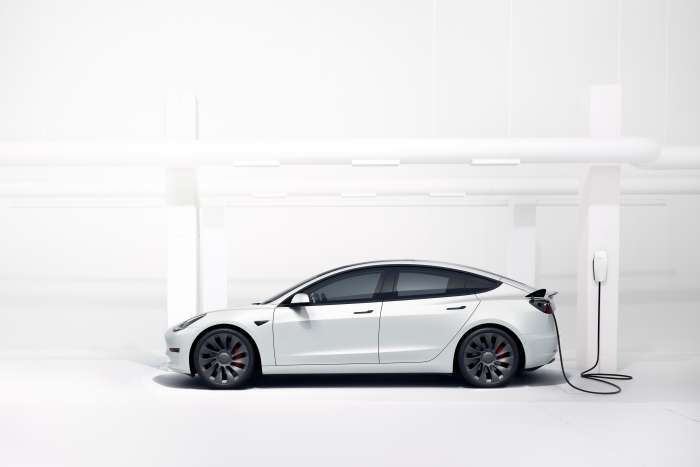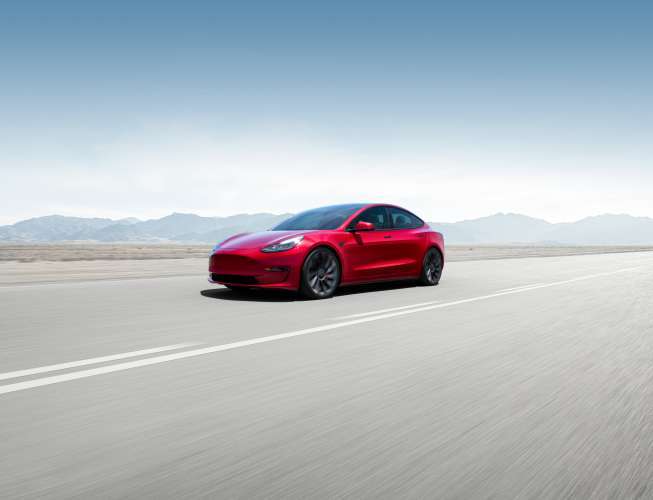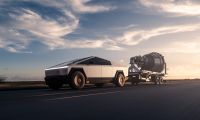According to Mark Kane, from insideEVs, "...Goodyear is developing airless tires for electric vehicles with an intention for a commercial launch of the first completely sustainable material and maintenance-free tire by 2030."
Watch Goodyear Testing Tesla Model 3 With Airless Tireshttps://t.co/Hq12a2ohUg
The company develops an airless alternative for electric vehicles and autonomous vehicles pic.twitter.com/u3G0piFshK— TeslaStars(@TeslaStars) November 10, 2021
The company has just released an exceptionally interesting video from tests of a Tesla Model 3 equipped with prototype non-pneumatic, airless tires; you can check the video on insideEVs webpage on this link.
"As part of its commitment to enable mobility now and in the future, Goodyear has extended testing of its non-pneumatic, airless tires to high-performance electric vehicles. After successfully executing durability testing of non-pneumatic tires at speeds up to 100 miles per hour, Goodyear recently tested the alternative tire architecture at the company’s Akron Proving Grounds."
Goodyear stated that "...testing has included maneuverability at speeds up to 55 miles per hour as well as acceleration and deceleration, with positive feedback from Goodyear and third-party trained test drivers."

The advantages of this type of tires are clear: first, you can never get a flat tire by a puncture or a blowout; French company Michelin says that some 200 million tires a year arrive at the scrapyard early because of them. Second, you don't have to keep an eye on the tire pressure; that doesn’t only save you time: it eliminates all premature wear caused by deflation. Its internal radii are adjustable to meet desired performance characteristics; its stiffness can be individually adjusted under acceleration, braking, cornering, and for handling bumps.
Pothole handling characteristics can even be adjusted to eliminate the need for an independent suspension on some types of vehicles. Holes can be drilled through the tread to allow water to escape, potentially creating much greater resistance to hydroplaning. It takes less raw material and less energy to make them, which makes them better for the environment, and they will eventually last up to three times longer than a conventional tire.

There are some disadvantages as well: airless tires generally have higher rolling resistance and provide somewhat less suspension than similarly shaped and sized pneumatic tires. Other problems for airless heavy equipment tires include dissipating the heat buildup that occurs when they are driven. Airless tires are often filled with compressed polymers (plastic), rather than air or can be a solid molded product.
Michael Rachita, Goodyear’s senior program manager, non-pneumatic tires also stated: “...we are excited to progress to this new phase of testing and stretch the imagination on what can be possible with airless tires. We have shown that Goodyear’s NPTs can achieve highway speeds while also maintaining the dynamic handling required for a consumer vehicle, which is a meaningful milestone.”
Will Tesla adopt these Goodyear new tires (or Michelin´s "Uptis") for the Model 3, Model Y, and eventually, the Cybertruck? What do you think? Please let us know in the comments section below.
All images courtesy of Tesla Inc.
Nico Caballero is the VP of Finance of Cogency Power, specializing in solar energy. He also holds a Diploma in Electric Cars from Delft University of Technology in the Netherlands, and enjoys doing research about Tesla and EV batteries. He can be reached at @NicoTorqueNews on Twitter. Nico covers Tesla and electric vehicle latest happenings at Torque News.












